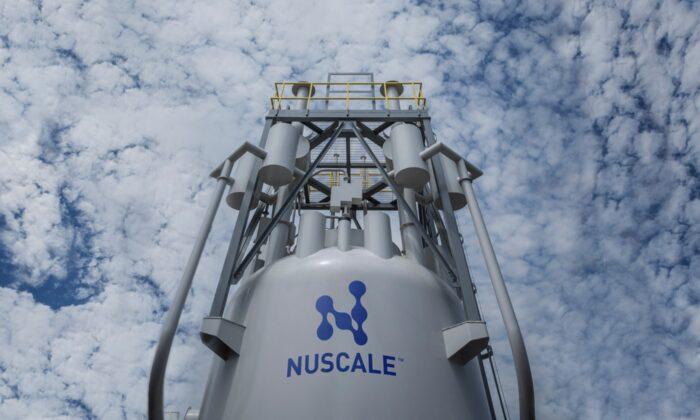The U.S. Nuclear Regulatory Commission (NRC) has certified the design for the first American-designed small modular nuclear reactor (SMR).
The final determination prevents the SMR from being legally challenged when a utility applies to build and operate a nuclear power plant in the United States, NRC spokesman Scott Burnell told CBS News last week.
NuScale’s power module is the first SMR design certified by the NRC and the seventh reactor design cleared for use. Previously approved designs were the traditionally large, light-water reactors.
America Takes a Major Leap in Affordable Nuclear Energy Production
Each of NuScale’s small power modules is about the third of the size of a traditional reactor design, which is based on a concept developed at Oregon State University in the 2000s.A single VOYGR SMR power plant would be able to house up to 12 of these power modules. Its compact size would also allow each module to be placed almost anywhere, including a floating version that could be placed on a barge to regions facing power shortages.
“SMRs are no longer an abstract concept,” said Kathryn Huff, assistant secretary for nuclear energy, in a press statement.
“They are real, and they are ready for deployment thanks to the hard work of NuScale, the university community, our national labs, industry partners, and the NRC.”
“This is innovation at its finest, and we are just getting started here in the United States,” she boasted.
The DOE’s design certification is a historic step toward an emissions-free environment, making the SMR manufacturer’s VOYGR power plant a near-term reality for the energy sector, Diane Hughes, NuScale’s vice president of marketing and communications, told CBS News.
This would allow power companies looking to build and operate a nuclear power plant to select the advanced light-weight SMR and apply to the NRC for a license.
If successful, the transition from traditional, giant, light-water nuclear reactors to advanced light-water SMRs could be a reality by the end of the decade.
NuScale has also filed an application for approval of a larger design, that would provide 77 megawatts per module, Burnell said, and that his agency is reviewing the application before starting a full review of the design.
Biden Administration Makes Investments in SMRs a Top Priority
The DOE said it had invested more than $600 million since 2014 to help support the creation of NuScale’s VOYGR small-modular reactor power plant and other domestic small reactor concepts.The Biden administration has made investments in advanced nuclear technologies a top priority and is planning to provide additional funding to extend the lifespans of nuclear power plants nationwide.
For many advocates of green energy, nuclear power is the way to go as the West transitions away from coal, oil, and natural gas, since the technology is the only practical way to obtain a carbon-free future.
The expansion of nuclear power generation using lightweight SMRs is a far effective long-term solution over weather-sensitive solar and wind-powered energy sources.
However, the United States would need to start increasing domestic mining production and build new uranium enrichment facilities to supply the nuclear fuel instead of importing it from countries like Russia.
Meanwhile, at least 40 different serious concepts are in the works to build the next generation of advanced nuclear reactors across the globe.
Rising Costs of Nuclear Power Plant Construction Remain an Issue
The first prototype using SMRs will be put into operation by the DOE and NuScale in 2025, with the first power plant expected to be up and running by 2029.The Energy Department is also working with Utah’s Associated Municipal Power Systems to demonstrate a six-module NuScale VOYGR plant with the Idaho National Laboratory capable of generating 462 MW of energy.
In addition, public concerns about safety, securing supply chains for reactor fuel, continued domestic opposition to uranium mining, and the disposal of nuclear waste will still remain issues that even the next-generation of nuclear power design would be unable to escape.
The Associated Press contributed to this report.




